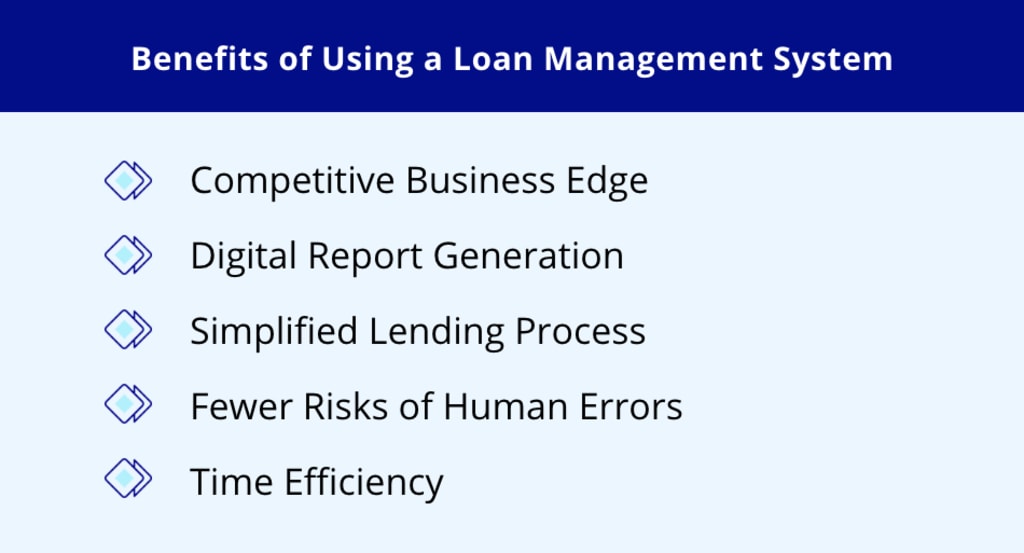How to Build a Comprehensive Loan Management System
The loan management system is a digital platform that streamlines both lenders’ and borrowers’ experience during the loan processing phase.

The financial industry has undergone a significant transformation with the adoption of technology to streamline operations and enhance customer experiences. Loan management systems (LMS) are a key component of this digital evolution, enabling lenders to manage loans efficiently while providing borrowers with a seamless experience. This article explores what a loan management system is, the essential features it should have, and why financial institutions need such systems. We’ll also discuss the complete loan management process and how to build a robust system.
What is a Loan Management System?
A loan management system is a digital platform designed to manage the entire loan lifecycle, from loan origination and approval to disbursement and repayment. It automates various tasks, reducing manual efforts, and minimizing the risk of errors. By centralizing loan-related data, a loan management system helps lenders maintain accurate records, monitor loan portfolios, and comply with regulatory requirements.
LMS is used by a wide range of financial institutions, including banks, credit unions, mortgage lenders, and other organizations that deal with loans. The system streamlines loan processing, ensuring a smoother experience for both lenders and borrowers.
Must-Have Features of a Loan Management System
To build an effective loan management system, it’s crucial to incorporate certain key features. These features not only improve the efficiency of the system but also enhance customer satisfaction. Here are the must-have features for a successful LMS:
Loan Origination: This feature streamlines the loan application process, automating tasks like document verification and customer onboarding. It ensures that only eligible applicants move forward in the loan process.
Loan Servicing: Loan servicing involves managing ongoing loan activities, such as interest calculations, payment processing, and escrow management. An effective LMS should handle these tasks efficiently.
Analytical Insights: A loan management system should provide robust analytics and reporting capabilities. This allows lenders to gain valuable insights into loan portfolios, track performance metrics, and make data-driven decisions.
Debt Collection: The system should include tools for managing overdue loans and automating debt collection processes. This helps lenders reduce the risk of defaults and maintain a healthy loan portfolio.
5 Reasons Why You Need a Loan Management System
Investing in a loan management system can bring numerous benefits to financial institutions. Here are five key reasons why you should consider implementing a loan management system:
Competitive Business Advantage: A well-designed LMS can give financial institutions a competitive edge by streamlining operations and providing a better customer experience.
Digital Report Generation: An LMS simplifies report generation, allowing lenders to access real-time data on loan disbursements, repayments, and other key metrics.
Simplified Lending Process: A loan management system automates many aspects of the loan process, reducing manual efforts and enhancing customer satisfaction.
Fewer Risk of Human Errors: Automation reduces the risk of human errors, ensuring that loan processing is accurate and compliant with regulations.
Time Efficiency: An LMS can significantly reduce the time required for loan processing, allowing lenders to focus on other critical tasks.
Understand the Complete Loan Management Process
Building a loan management system involves several steps to ensure a smooth and efficient process. Here’s a breakdown of the complete loan management process:
Define Business Objectives: Start by understanding the goals of your loan management system. This includes identifying the types of loans, user roles, and compliance requirements.
Conduct In-Depth Market Research: Analyse market trends and competitive landscape to understand customer needs and preferences. This helps in designing a system that aligns with industry expectations.
Design an Interactive User Interface: The user interface is crucial for customer satisfaction. Ensure that the design is user-friendly and intuitive to navigate.
Focus on QA Testing: Conduct rigorous testing to identify and resolve any bugs or issues. Quality assurance ensures the stability and reliability of the system.
Post-Launch Maintenance Services: After launching the loan management system, provide ongoing maintenance and support to ensure its continued success.
About the Creator
Sumit Chauhan
I'm Sumit Chauhan, a dedicated tech enthusiast with a keen interest in exploring the realms of mobile app development across Android and iOS platforms.
Enjoyed the story? Support the Creator.
Subscribe for free to receive all their stories in your feed. You could also pledge your support or give them a one-off tip, letting them know you appreciate their work.





Comments
There are no comments for this story
Be the first to respond and start the conversation.